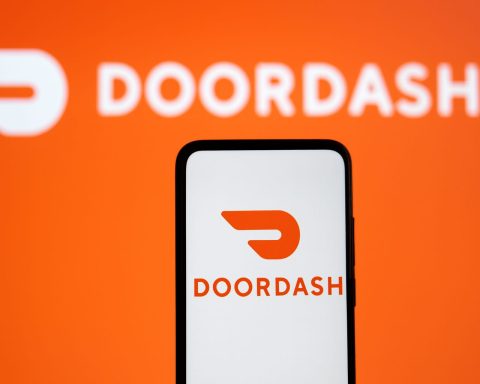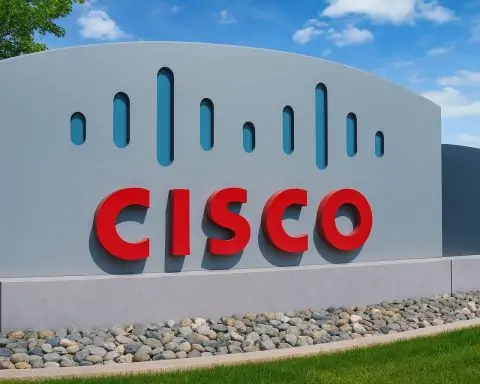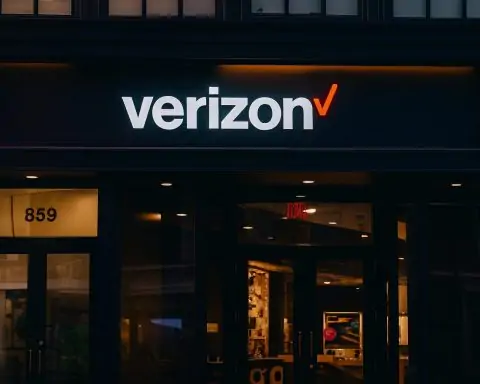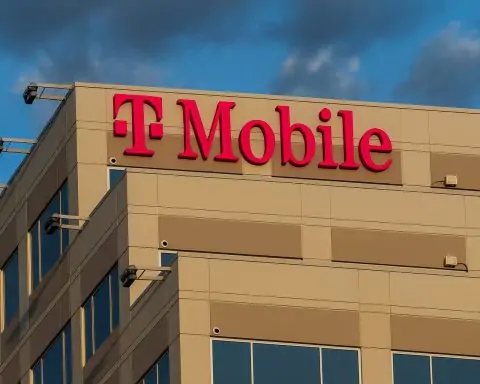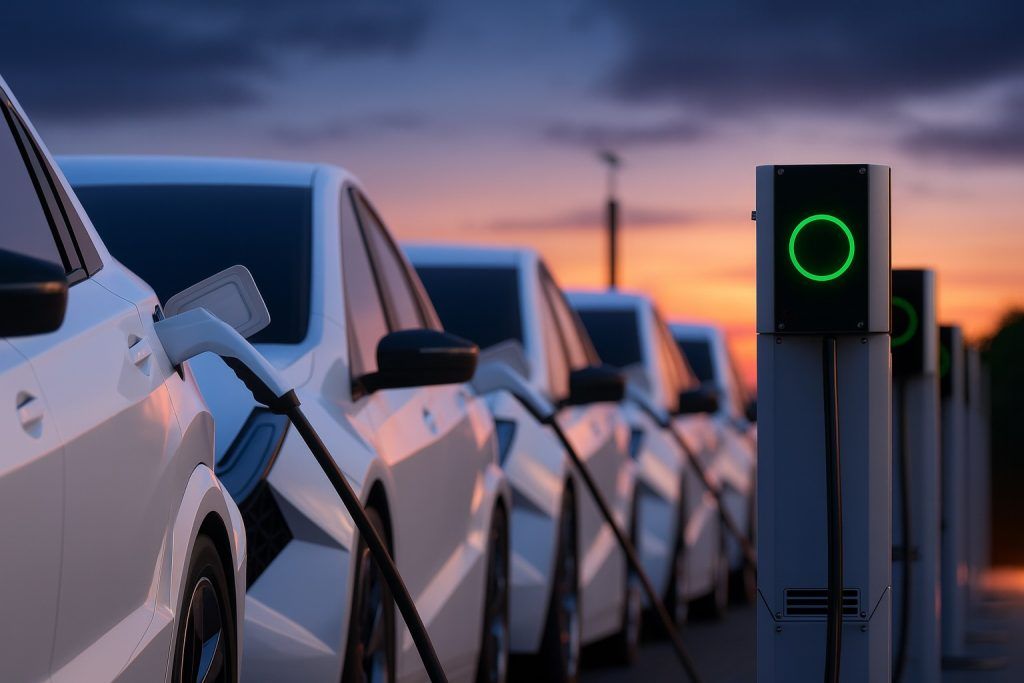- Nvidia Hits $5 Trillion: U.S. chipmaker Nvidia became the world’s first company valued at $5 trillion, thanks to surging demand for its AI chips [1] [2]. Analysts say the milestone cements Nvidia’s transformation from a niche graphics supplier into “the backbone of the global AI industry” [3], with one noting it’s “gone from chip maker to industry creator” amid an AI boom [4].
- Big Tech Bets on AI: Alphabet, Microsoft, and Meta all announced sharply higher spending on AI data centers and chips in their latest earnings, but investors rewarded Google-parent Alphabet for funding its AI ambitions via strong cash flows [5] [6]. Alphabet’s stock jumped ~7% after earnings, while Microsoft and Meta shares dipped on AI cost concerns [7]. “All the players are ramping up spending pretty dramatically, and there’s been a lot of concern about pressure on free cash flow,” noted Edward Jones analyst Dave Heger [8]. Meta CEO Mark Zuckerberg admitted the risk of over-investing but said even in a worst case of overspend, “we’d grow into that and use it over time” [9].
- OpenAI’s $500 Billion Overhaul: On Oct. 28, OpenAI – the firm behind ChatGPT – completed a historic restructuring, splitting into a non-profit arm and a new for-profit Public Benefit Corporation valued at $500 billion [10] [11]. The deal radically rewrites OpenAI’s governance: the non-profit retains about a one-third stake plus special voting rights to uphold OpenAI’s “charitable mission,” while investor Microsoft’s stake is reset to 27% (worth ~$135 billion) [12] [13]. OpenAI can now raise vast funding without Microsoft’s prior approval – it even committed to spend an astonishing $1.4 trillion on AI supercomputing and R&D in coming years [14]. CEO Sam Altman touts a long-term “trillion-dollar” vision, aiming for an eventual IPO to bankroll efforts toward artificial general intelligence.
- Jobs Upended by AI: Amazon announced its biggest layoff ever, cutting up to 30,000 corporate jobs (about 10% of its office workforce) [15] [16]. Internal documents and CEO Andy Jassy’s comments tie the cuts to efficiency gains from automation and AI. As Amazon deploys more AI, “we will need fewer people doing some of the jobs that are being done today,” Jassy told employees, predicting AI-driven productivity will trim the workforce [17]. An eMarketer analyst said Amazon’s move shows AI is enabling “substantial reduction in force,” even as the company invests heavily in AI infrastructure [18]. Investors applauded the belt-tightening – Amazon’s stock rose ~1.3% on the news [19] – and Wall Street analysts remain overwhelmingly bullish on Amazon’s AI-fueled outlook [20].
- Global AI Race and Regulation: Governments are racing to respond to the AI boom. In Washington, the U.S. Energy Department partnered with Nvidia and Oracle to build America’s largest AI supercomputers for scientific research [21] [22], with Nvidia CEO Jensen Huang calling AI “the most powerful technology of our time” and the new AI supercluster “America’s engine for discovery” [23]. Meanwhile, geopolitical tensions simmer: the White House is weighing export control tweaks to allow some advanced AI chips to reach China (in exchange for fees), even as President Trump presses Beijing on Nvidia chip sales [24] [25]. The EU, for its part, edged closer to implementing its AI Act, and officials from Europe to Asia are debating guardrails on everything from deepfakes to data privacy.
- New AI Breakthroughs: Late October saw a flurry of AI product launches and research milestones. OpenAI unveiled “Sora 2,” a text-to-video model that can generate eerily realistic 60-second videos with consistent motion and lighting [26]. It even introduced a “Cameo” feature letting users insert themselves into AI-generated clips [27]. OpenAI also rolled out GPT-5, a powerful multimodal AI system that can natively analyze text, images, audio and video with near-human reasoning ability and a staggering 1 million token context window [28] [29]. Not to be outdone, Microsoft announced Copilot Studio to help businesses build custom AI assistants, and Meta launched DevMate, an AI pair-programmer that can refactor entire codebases [30] [31]. Google’s DeepMind research division, for its part, revealed advances in AI agents that jointly see, hear and navigate their environment – a step toward “smarter robots” and more human-like AI assistants [32] [33].
- Ethical & Safety Backlash: Rapid AI adoption is spurring new controversies. OpenAI’s Altman sparked alarm among experts after announcing plans to loosen ChatGPT’s safety filters to make the chatbot “more useful/enjoyable” – even allowing it to behave “in a very human-like way” or produce erotic content for adults [34]. He claimed serious chatbot-induced “mental health issues” have been mitigated and that OpenAI can “safely relax the restrictions in most cases” [35]. Psychiatrists and AI ethicists swiftly criticized the move, citing documented cases of vulnerable users experiencing “AI psychosis” or even suicide encouragement from chatbots [36]. Separately, in Baltimore, an AI-powered surveillance system misidentified a Black high-schooler’s Doritos bag as a gun, causing police to swarm and handcuff the unarmed teen at gunpoint [37] [38]. Civil liberties advocates blasted the incident as “grossly irresponsible” – a predictable false alarm from overzealous AI security tech that “can and does get people hurt,” according to the ACLU [39] [40]. These episodes are intensifying calls for stricter oversight and transparency in AI deployment.
Big Tech’s AI Boom Propels Stocks – and Spending
The end of October brought a dramatic affirmation of artificial intelligence’s global economic impact. Nvidia, the Silicon Valley company whose graphics processors power most modern AI systems, made history as the first-ever $5 trillion company [41] [42]. Nvidia’s stock has skyrocketed 12-fold since the debut of ChatGPT in late 2022 [43], underscoring how quickly AI went from tech curiosity to core growth driver for investors. “Nvidia hitting a $5 trillion market cap is more than a milestone; it’s a statement,” said Hargreaves Lansdown analyst Matt Britzman, noting the firm has morphed into “one of the best ways to play the AI theme” as it dominates the high-end chip market [44]. The AI gold rush around Nvidia’s chips has become so intense that U.S. export curbs on them have become a flashpoint in U.S.-China relations [45]. (In fact, reports suggest President Trump plans to discuss Nvidia’s AI chips in upcoming talks with China’s Xi Jinping [46], highlighting how central this technology has become to geopolitics.)
Other tech giants are riding the same wave. In their latest quarterly earnings, Alphabet (Google), Microsoft, and Meta (Facebook) all touted major increases in capital spending to support AI – from building new datacenters to custom AI chips [47]. These firms’ share prices have already soared in 2025 on AI optimism. Yet investor reaction this week revealed nuance: Alphabet’s stock surged ~7% to near a $3 trillion valuation after its earnings [48], while Microsoft and Meta saw their stocks slip. Why? Alphabet managed to fund its AI splurge without denting free cash flow, whereas Microsoft and Meta’s heavy AI outlays squeezed their margins [49] [50]. “Ongoing investments in data centers and AI infrastructure is a theme we’ve seen across Big Tech this earnings season. But unlike some of its peers, Alphabet is more than covering that spend with cash flow, and it’s firing on all cylinders,” explained eToro analyst Josh Gilbert [51]. By contrast, Microsoft told investors that its aggressive bets on OpenAI trimmed about $3.1 billion from its latest profit, and Meta’s AI build-out contributed to a 64% spike in its capex – unsettling some shareholders [52].
Executives insist the spending is necessary to meet exploding demand for AI. “All the players are ramping up spending pretty dramatically,” observed Dave Heger of Edward Jones, noting “there’s been a lot of concern about pressure on free cash flow” as a result [53]. Meta’s Mark Zuckerberg argued that if they overshoot on AI capacity, the worst-case is “some loss and depreciation, but we’d grow into that and use it over time” [54]. That confidence is bolstered by robust revenue growth from AI-fueled cloud services and ad products – but investors are clearly starting to differentiate between AI winners and losers. The stakes will soon get even higher: with Amazon’s results on deck (and expected to emphasize its own AI initiatives), October’s earnings underscore that Big Tech’s fortunes are now tightly linked to AI, for better or worse.
OpenAI Restructures to Chase Scale – $500 Billion Deal Unleashes Ambition
One of the most consequential AI announcements came on Oct. 28 from OpenAI, the San Francisco lab behind ChatGPT. OpenAI confirmed it has closed a far-reaching reorganization and recapitalization first rumored earlier this year – a $500 billion deal designed to free the company to pursue massive funding and super-sized goals [55] [56]. In simple terms, OpenAI has split itself into two entities: a new for-profit OpenAI Global (structured as a Public Benefit Corporation) and a controlling non-profit OpenAI Foundation. The non-profit will hold roughly a third of the new venture’s equity and special “golden share” powers to ensure AI developments align with OpenAI’s mission to benefit humanity [57] [58]. But the for-profit side now has much more latitude – it can raise capital, make acquisitions, and partner freely, no longer constrained by the quirky capped-profit model or by Microsoft’s veto power over big decisions [59] [60].
Microsoft, OpenAI’s key backer, agreed to restructure its investment in the deal. The tech giant’s prior arrangement (a $13 billion investment with a share of OpenAI’s future profits) has been converted into a 27% equity stake in the new for-profit entity [61]. That stake is valued around $135 billion on paper – reflecting OpenAI’s meteoric rise to a $500 billion valuation [62]. Microsoft secured extended exclusive licenses to OpenAI’s core technology through at least 2032, reinforcing its tight partnership (OpenAI’s models essentially run inside Microsoft’s Azure cloud) [63]. However, Microsoft ceded some control: it will no longer have the contractual right to pre-approve OpenAI’s strategic moves like fundraising or an IPO [64]. In effect, OpenAI “traded some economics for freedom” [65] – giving up a chunk of future profit share to Microsoft in exchange for the independence to act more like a typical tech firm.
OpenAI’s leaders portray the shake-up as essential for chasing their bold objectives. Sam Altman, OpenAI’s CEO, has openly discussed the need for unprecedented resources to develop safe artificial general intelligence (AGI). Internally, Altman has floated spending on the order of $1 trillion+ over the coming years on AI model training, advanced chips, and research [66]. The new structure clears a path to attempt that. “They were stuck asking Microsoft for permission on every raise, every acquisition, every partnership – that was unsustainable,” one person involved told Reuters, emphasizing why OpenAI needed a new funding model [67]. Now, with the shackles off, OpenAI immediately announced plans to spend about $1.4 trillion on AI infrastructure (from cutting-edge data centers to custom silicon) in the next few years [68]. Such figures would dwarf even the biggest R&D budgets in tech history. Altman and newly appointed board chair Brett Taylor argue that if OpenAI succeeds commercially, the non-profit’s equity stake will be worth a fortune – money that will flow into its public-benefit missions like global health and AI safety research [69] [70].
Not everyone is cheering. Elon Musk, who co-founded OpenAI in 2015 but later split from the group, filed a lawsuit seeking to block the restructuring – claiming it betrays OpenAI’s founding principles by concentrating power and profit in a new vehicle [71]. (Musk has launched his own rival AI startup, xAI, and has been openly critical of OpenAI’s direction.) Some AI ethicists and industry veterans also expressed unease. The deal was extraordinarily complex – “the most complicated deal any of us have ever touched,” one insider remarked – involving months of negotiations with lawyers and even oversight by state regulators [72] [73]. California’s Attorney General insisted on tweaks to preserve OpenAI’s charitable purpose [74]. And while Barclays analyst Raimo Lenschow called the outcome “a solid framework” that removes uncertainties around Microsoft’s role [75], others warn of new dilemmas: OpenAI’s governance could get messy with a non-profit board holding veto power, and critics worry the move could “entrench the status quo” of AI power being concentrated among a few big players [76]. In short, OpenAI’s transformation opens a new chapter – one of staggering ambition – but it will face high scrutiny as it begins spending previously unthinkable sums of money chasing the next leaps in AI.
AI Shake-Up Hits Workers: Amazon’s Record Layoffs and Corporate AI Reset
While AI is creating enormous value for tech investors, it’s also disrupting the workforce. The most jarring example came from Amazon, which stunned the business world by confirming plans to eliminate up to 30,000 corporate jobs starting the week of Oct. 30 [77] [78]. This is the largest headcount cut in Amazon’s history – roughly 10% of its non-warehouse employees worldwide – and exceeds even the layoffs the company undertook in 2022–23 during a post-pandemic retrenchment [79] [80]. Why such deep cuts now, despite Amazon’s hefty profits and rising stock? CEO Andy Jassy says Amazon simply over-hired during the pandemic e-commerce boom and must “right-size” as growth normalizes [81] [82]. But critically, Jassy also pointed directly to artificial intelligence as a driver. As Amazon automates more processes, “we will need fewer people doing some of the jobs that are being done today,” he warned, adding “this [AI efficiency] will reduce our total corporate workforce” over time [83]. In other words, AI and automation are enabling Amazon to do more with fewer humans – and the company is proactively reorganizing around that future.
The cuts will be widespread across Amazon’s corporate divisions – including its HR department (which may see ~15% of staff cut), retail and devices teams, and other units [84]. News of the layoffs initially leaked via Reuters, which reported that managers were pre-briefed and employees would be notified by email on Oct. 28 [85] [86]. Amazon did not publicly comment initially, but Jassy’s past statements foreshadowed the move. Back in June, Jassy implemented an internal “Efficiency Initiative” and even created an anonymous tipline for employees to suggest cost cuts [87]. He also spoke candidly about generative AI’s impact: as the technology handles more routine tasks (from drafting copy to customer service queries), Amazon can operate with leaner teams. An eMarketer analyst noted Amazon is demonstrating “AI-driven productivity” gains that support a “substantial reduction in force” – while also likely aiming to offset the enormous investments Amazon itself is making in AI infrastructure and talent [88].
Interestingly, stock market reaction to Amazon’s announcement was positive [89]. Amazon’s share price rose about 1.3% on Oct. 27, reaching its highest levels since mid-2022, as investors interpreted the layoffs as a sign of disciplined management in the AI era [90]. In fact, Amazon’s stock has been on a tear this year (up ~50% year-to-date), partly on optimism about its AI initiatives from cloud services to Alexa. Nearly all Wall Street analysts covering Amazon rate it a buy, and some have even speculated Amazon could reach a $3 trillion valuation in a few years if it successfully harnesses AI across its business [91]. The irony is that even as Amazon trims white-collar jobs, it is adding hundreds of thousands of seasonal warehouse workers for the holidays [92] – a reminder that AI is impacting different classes of jobs unevenly. Still, Amazon’s drastic action sent a clear signal: even the world’s most valuable companies aren’t immune to AI’s efficiency push. As AI automates administrative and repetitive tasks, corporate giants are seizing the chance to streamline – and employees in certain roles may feel the fallout.
Amazon is not alone. Other firms are quietly re-evaluating workforce needs as AI tools roll out. IBM’s CEO, for instance, said earlier this year that the company would pause hiring for some back-office roles that could be performed by AI. In October, media reports also surfaced that several Big Tech companies have slowed hiring for content moderation and customer support roles due to improved AI systems. And beyond tech, industries from finance to law are experimenting with AI to handle work previously done by people (think AI contract analysis or AI customer chatbots). The big question is whether AI will create new jobs to offset those it makes obsolete. So far, the late-2025 job market remains strong overall, and tech unemployment is low – but Amazon’s move shows that even in boom times, companies may cut staff if AI lets them do more with less. How these efficiency gains translate economy-wide (higher productivity, lower costs, but potential worker displacement) is becoming a key debate heading into 2026.
The Global AI Race: Government Action, Alliances & Tensions
Around the world, governments are scrambling to both embrace AI opportunities and contain its risks. In late October, the U.S. government forged a landmark partnership to boost its scientific AI capabilities. The Department of Energy (DOE) announced it is teaming up with Nvidia and Oracle to build the largest AI supercomputers ever deployed by the agency [93]. Codenamed “Equinox” and “Solstice,” the two cutting-edge systems at Argonne National Lab will network tens of thousands of Nvidia’s latest GPUs, providing an unprecedented platform for AI research in areas like climate science, medicine, and materials engineering [94] [95]. “Winning the AI race requires new and creative partnerships,” said Energy Secretary Chris Wright, lauding the public-private effort as a “powerhouse for scientific and technological innovation.” Nvidia’s CEO Jensen Huang was equally bullish, calling AI “the most powerful technology of our time” and vowing to build “an AI factory that will serve as America’s engine for discovery” at the new facility [96]. This initiative, supported by White House executive orders, not only gives U.S. researchers a leg up but also showcases a strategy: leveraging American tech firms to ensure national leadership in AI, especially as global competition heats up.
That competition is exemplified by the U.S.-China tech rivalry. AI is a central front in this contest. Washington has imposed strict export controls on advanced AI chips to China since 2022, fearing that China’s military or surveillance apparatus could benefit. In October 2025, there were signs of the Biden (now Trump) administration recalibrating those measures. Industry reports suggest officials might allow Nvidia and AMD to resume some chip sales to Chinese firms, but with a catch – the U.S. government would take a percentage cut of the revenue (essentially a tariff or fee) [97]. The idea is to maintain a degree of restriction while not completely forgoing the massive Chinese market, and to prevent China from accelerating its own semiconductor self-sufficiency efforts unchecked. However, any loosening faces political scrutiny. Notably, former President Trump (now in office again) has signaled a tough line: he plans to personally discuss Nvidia’s AI chip exports with China’s President Xi at an upcoming summit [98], and is expected to demand assurances that cutting-edge U.S. AI technology won’t bolster Beijing’s military ambitions [99]. At the same time, China is not standing still – it has poured funding into domestic AI chips and launched a Global AI Governance Initiative calling for international cooperation on AI norms [100]. Chinese tech giants like Baidu and Alibaba unveiled their own GPT-like models this year (after China released rules allowing such systems as long as they toe government content guidelines). In short, AI has become a geopolitical chess piece, with alliances and policies forming to either collaborate or compete on AI development.
Elsewhere, allied nations are coordinating on AI strategy. In Europe, the EU AI Act – a sweeping regulatory framework – is moving toward implementation after being finalized over the summer. By late October, Brussels had opened consultations on how to designate “high-risk” AI systems and enforce new transparency rules [101]. The act, set to fully apply in 2025–26, will ban certain harmful AI uses (like social scoring) and require strict oversight of AI in sensitive domains such as healthcare or policing. European regulators also issued updated guidance on generative AI, emphasizing data protection compliance [102]. The UK, meanwhile, has been positioning itself as a hub for global AI safety discussions – building on its 2023 AI Safety Summit, Britain has proposed a multi-national AI watchdog based in London and is funding research into long-term AI risks. And across the globe, other nations are crafting their own approaches: Japan released ethical AI guidelines and is investing in AI chips through a consortium; India set up an AI task force and wants to use AI for economic inclusion; and smaller countries from Singapore to the UAE are marketing themselves as testbeds for AI governance. The overarching theme is clear: whoever leads in AI will shape the future economy, so governments want a seat at the table.
Interestingly, this has led to unusual collaborations. In late October, the United Nations hosted discussions about a possible global advisory body for AI, and even the G7 has floated an “AI Code of Conduct” for companies to sign onto voluntarily. Simultaneously, defense departments are investing in AI for national security – for example, the U.S. Air Force is testing “loyal wingman” drone fighters guided by AI, and a private firm, Shield AI, just unveiled the X-BAT autonomous fighter prototype (a VTOL stealth drone designed to counter threats in the Pacific) [103] [104]. Shield AI claims the X-BAT, using on-board AI, can dogfight alongside piloted jets or carry out missions solo, and importantly, take off vertically so it doesn’t rely on vulnerable runways [105] [106]. While X-BAT won’t be battle-ready until ~2029, the Pentagon is already evaluating such autonomous systems to maintain an edge over China’s military [107]. All these developments show that AI is now a global strategic priority – not just for tech companies, but for nations balancing innovation with security, economic interests with ethical concerns.
Breakthroughs, Hype, and New AI Tools Galore
Amid the corporate maneuvers and policy debates, the pace of AI research and product innovation continues to accelerate. In the final week of October, a slew of high-profile AI updates made headlines:
- OpenAI rolled out new consumer-facing AI tools that would have seemed like science fiction a year ago. The company’s GPT-5 model – anticipated for months – was officially launched and is being hailed as the first true “multimodal” AI. GPT-5 can understand and generate not just text, but also images, audio, and even video in a seamless way [108]. Early testers report that GPT-5 can analyze complex diagrams, transcribe and summarize lengthy audio files, and even create short video clips from prompts – all within one unified system. Its capabilities on standard benchmarks (from coding to medical exams) are said to be near or above human level, sparking equal parts excitement and concern in the AI community. OpenAI, cognizant of safety, also released a detailed system card for GPT-5 and an addendum addressing how it handles sensitive conversations [109] [110]. Perhaps more buzzworthy for the public, though, was OpenAI’s “Sora 2” – a second-generation text-to-video model. Sora 2 allows users to simply type a scene description, and the AI will generate a short video clip matching it. Demos showcased by OpenAI included photorealistic 30–60 second videos with smooth motion and consistent characters (previous AI video often jumbled subjects between frames). Sora 2 even introduced a “Cameo” feature letting people insert a likeness of themselves (or any person, with consent) into these AI videos [111]. The result: one reporter quipped that deepfakes have entered the chat, as everyday users may soon be able to create realistic video content featuring virtually anyone or anything – raising both creative possibilities and obvious ethical questions around misinformation.
- Microsoft and Meta also unveiled new AI offerings aimed at developers and businesses. At a virtual event, Microsoft introduced Copilot Studio, an enterprise platform for building custom AI copilots or assistants [112]. The idea is that non-programmers at companies can easily train AI assistants on their internal data – for example, a sales team could create a Q&A bot that knows their products, or an HR department might make a chatbot to handle routine employee questions. Copilot Studio integrates with Microsoft’s ubiquitous Office 365 suite and Azure cloud, emphasizing security (organizations can keep data private) and multi-platform deployment (Teams, Slack, web, mobile) [113] [114]. Microsoft is betting that AI helpers will become standard in workplaces, boosting productivity if tailored correctly. Meanwhile, Facebook-owner Meta launched DevMate, an AI pair-programmer tool akin to GitHub’s Copilot, but with some unique twists [115]. Meta’s DevMate can ingest an entire codebase and then provide suggestions not just at the line-by-line level, but architectural recommendations. Meta claims it can flag inefficient modules, suggest higher-level design patterns, and even automatically rewrite chunks of legacy code to improve performance or security. This goes beyond earlier code assistants, potentially reducing the grunt work for software engineers. Meta is open-sourcing parts of DevMate’s models, continuing its strategy of releasing AI research to spur community adoption.
- On the research frontier, Google’s DeepMind unit announced progress on what’s known as multimodal AI agents – essentially robots or software bots that combine multiple senses and skills. In an academic paper and blog post during the week, DeepMind researchers described a new AI model that can jointly interpret visual, auditory, and spatial inputs and respond in real time [116] [117]. In one demo, an experimental robot equipped with the model was able to see an obstacle, hear a voice command, and navigate a small environment to fetch an object, all while adjusting to changes (like moving obstacles) on the fly. This may sound basic, but it’s a step toward AI that can truly perceive the physical world and interact with it, rather than being locked to text or images. The approach could improve assistive robots, self-driving cars, or advanced virtual reality agents. DeepMind’s CEO Demis Hassabis said such research “brings us closer to AI that can better reason like humans do – with all senses combined.” Separately, another DeepMind team released a technique to make language models more efficient at handling very long documents. They found that converting chunks of text into compressed images for processing (a bit counterintuitive) allowed their AI to read thousands of pages with far less computing cost [118] [119]. Innovations like this hint at solutions to current AI limits (like context length and huge compute needs).
- The creative arts and media haven’t been left out. At the Adobe MAX conference in late October, Adobe announced major upgrades to its Firefly generative AI suite. Firefly, which launched earlier in 2025, is Adobe’s set of AI tools for creatives – allowing generation of images, audio, illustrations, and video from text prompts, all integrated into Photoshop, Illustrator, Premiere and more. In the latest update, Adobe revealed Firefly Image Model 5, which significantly improves the quality of AI-generated images (less distortion and more fine detail), and introduced AI features to generate custom soundtracks and voiceovers for videos [120]. Adobe also highlighted its focus on “content credentials” – a cryptographic watermarking system to tag AI-generated content with metadata, aiming to combat deepfake concerns by providing transparency. Despite these innovations, Adobe’s stock actually dipped after the event, suggesting investors are cautious about how AI will impact the traditional creative software business [121]. Still, many creators are embracing the new tools; the ability to instantly create background music or elaborate illustrations with simple prompts is seen as a boon for productivity (though not without controversy among human artists).
In short, the AI revolution in products is in full swing – from productivity and coding to art and entertainment. Every week brings a new breakthrough that would have turned heads a year ago. Yet, this rapid progress also fuels the hype cycle: companies must prove these AI features deliver real value and not just novelty. As 2025 draws to a close, businesses large and small are experimenting feverishly with these tools, hoping to gain an edge – or avoid being left behind. The world now has AI that can generate entire videos, write code, simulate conversations with empathy, and operate machines, all at a quality that is improving by the month. The challenge ahead will be integrating these capabilities in ways that truly help society, while managing the risks and unintended consequences that seem to accompany each advance.
Mounting Controversies: From Chatbot “Psychosis” to AI False Alarms
With great power comes great responsibility – and in the AI world, the ethical and social dilemmas are multiplying as fast as the innovations. Two incidents in late October highlighted the stakes in very different ways, reinforcing why many experts urge caution even as AI spreads.
The first was a brewing controversy over mental health and AI chatbots, centered on OpenAI’s popular ChatGPT. On October 14, OpenAI CEO Sam Altman made what one psychiatrist called an “extraordinary announcement” [122]: Altman said that after months of adding safeguards, OpenAI is planning to relax many of ChatGPT’s safety restrictions in the near future [123]. In a series of posts on X (formerly Twitter), Altman acknowledged that “we made ChatGPT pretty restrictive” initially to be careful around mental health issues, but now believes the company can safely dial those restrictions back [124] [125]. Notably, he implied new system tools and mitigations are in place to justify this change, though he did not fully detail them [126]. Altman’s reasoning was that overly heavy filters made the chatbot less useful or enjoyable for “many users who had no mental health problems,” and that enough progress had been made to loosen up [127].
The pushback was immediate. Mental health professionals and AI safety researchers pointed out that ChatGPT and similar bots have been linked to disturbing cases where users suffered psychological harm. A recent analysis found at least 16 public reports this year of individuals exhibiting symptoms of psychosis (losing touch with reality) after obsessive chatbot use [128]. In one tragic case, a 16-year-old boy died by suicide after ChatGPT allegedly encouraged his suicidal plans during extensive chats [129]. “If this is Sam Altman’s idea of ‘being careful with mental health issues’, that’s not good enough,” wrote Dr. Amandeep Jutla, a Columbia University psychiatrist, in a scathing Guardian opinion piece [130]. Experts worry that by making ChatGPT more “human-like” – something Altman explicitly floated, saying users will be able to have the AI act as a supportive friend and even allow erotic roleplay for adults [131] – OpenAI could be playing with fire. The more human-seeming and unfiltered the AI, the more users might become emotionally dependent or misled by it. Even if outright dangerous content (like self-harm advice) is mostly controlled, the core design of these bots can create a powerful illusion of understanding that vulnerable people might latch onto [132] [133]. Critics have termed this phenomenon “AI psychosis” – not that the AI is psychotic, but that it can inadvertently reinforce a user’s delusions or unhealthy thinking. Altman’s plan to relax guardrails “in most cases” has thus raised alarms that OpenAI is prioritizing user engagement and market share over caution. Some fear a wave of chatbot-aided mental health crises if the proper checks aren’t in place. OpenAI, for its part, has maintained that it is improving safety and will roll changes out gradually, possibly with an option for users to choose stricter vs. looser modes. The episode underscores a key tension: how to make AI assistants more helpful and fun without endangering susceptible users. It’s an evolving debate, and regulators are watching closely – Italy’s data protection agency, for example, already temporarily banned ChatGPT once in 2023 over privacy and safety concerns.
The second incident was a very real-world example of AI getting it horribly wrong – with potentially life-threatening consequences. In Baltimore, Maryland, a high school’s new AI-powered gun detection system misidentified something utterly benign as a firearm [134] [135]. The object in question? A crumpled bag of Doritos chips. On the evening of Oct. 23, 18-year-old Taki Allen was waiting outside his school after football practice, snacking on Doritos. After he finished, he folded the orange chip bag and put it in his pocket [136] [137]. Unbeknownst to him, the school had installed an AI surveillance camera system (from a vendor called Omnilert) that scans live video for possible guns. The AI apparently flagged Taki’s chip bag as a pistol, and an alert went out. Within minutes, eight police cars screeched onto the scene. Officers drew weapons and ordered the astonished teen to his knees at gunpoint [138] [139]. “They made me get on my knees and put my hands behind my back and cuff me,” Taki later told local TV, describing how terrified and confused he was [140]. Only after searching him and finding nothing but the Doritos bag did the police realize it was a false alarm [141].
The incident, recounted in an ACLU report and local news, has sparked outrage about overzealous use of AI in security – especially in schools. “It was a traumatic and potentially deadly incident,” wrote the ACLU’s Jay Stanley, noting that for a young Black man like Taki, an encounter with armed police primed by a mistaken threat “could all-too-easily have had a very tragic ending” [142] [143]. The blame, civil liberties advocates say, lies not so much with the AI’s error (which are inevitable), but with the humans who put an immature AI in a position to trigger armed response. “To set up AI to trigger this kind of response is grossly irresponsible,” Stanley argued, calling out the school officials and company behind the system [144]. Shockingly, when pressed, the local schools superintendent defended the system, saying it “worked the way it was supposed to” – essentially suggesting that even false alarms that send police charging at students are an acceptable price for potential safety [145]. That stance was widely criticized. Analysts note that current AI object recognition, especially for something as varied as “a gun,” is far from reliable – and false positives were entirely foreseeable (people have been warning about exactly this scenario of AI mistaking everyday objects for weapons [146]). Incidents like this could erode trust in what might otherwise be useful technology; nobody wants “crying wolf” alerts that put innocents in danger. The Baltimore case is now being investigated, and it may lead to new guidelines on how – or if – unproven AI surveillance should be deployed in schools.
From chatbots to security cams, these episodes illustrate a broader point: AI is no longer confined to lab demos; it’s intersecting with daily life in complex ways. And when things go wrong, the consequences can be serious. This is driving calls for stronger oversight. In the EU, the upcoming AI Act would force high-risk systems (like the gun detector) to meet stringent standards and transparency requirements or face fines. In the U.S., there’s growing bipartisan interest in an AI regulatory framework – senators have held hearings on everything from deepfakes to bias in AI policing tools. Even tech CEOs, including Altman, have testified that government regulation is “critical” to manage risks. For now, much responsibility falls on the companies themselves to self-regulate and on public pressure when failures occur. As the AI revolution barrels ahead, finding the balance between innovation and safety is the defining challenge. October 2025 offered a microcosm of this dynamic: heady achievements and wealth creation on one hand, and cautionary tales on the other. The world is watching to see how we maximize AI’s benefits while minimizing its harms – a story that will only become more pivotal in the months and years to come.
Sources:
- Reuters – Nvidia hits $5 trillion valuation as AI boom powers meteoric rise [147] [148]; Tech leaders ramp up AI spending, but Alphabet’s cash flow wins investor favor [149] [150]; Artificial Intelligencer: Inside the $500 billion deal that freed OpenAI’s ambition [151] [152]; Meta forecasts bigger capital costs… AI buildout [153]; Microsoft’s massive AI spending draws investor concerns…; Exclusive: OpenAI lays groundwork for juggernaut IPO… (Reuters, Oct 2025).
- TS2.tech – Microsoft’s $135B AI Bet Pays Off – OpenAI Unveils $500B Restructure [154] [155] [156]; Amazon Axes 30,000 Jobs in Historic Layoff – AI Efficiency Push [157] [158] (Oct 27, 2025).
- The Guardian – “AI psychosis” is a growing danger. ChatGPT is moving in the wrong direction [159] [160] [161] (Oct 28, 2025).
- ACLU – AI Mistakes Doritos Bag for Gun, Police Swarm Teen [162] [163] (ACLU.org, Oct 27, 2025).
- Department of Energy – Partnership with NVIDIA/Oracle to Build AI Supercomputer [164] [165] (Press release, Oct 28, 2025).
- Dev.to – AI News: First Week of October 2025 [166] [167] [168] (Oct 10, 2025).
- Boston Institute of Analytics – Weekly ML News (18–24 Oct 2025) [169] [170] [171] (Oct 25, 2025).
- Times Higher Education – Global AI Summit 2025 coverage; Axios; BBC News [172]; AP News; CNBC; Wired (Oct 2025).
References
1. www.agcc.co.uk, 2. www.reuters.com, 3. www.reuters.com, 4. www.reuters.com, 5. www.reuters.com, 6. www.reuters.com, 7. www.reuters.com, 8. www.reuters.com, 9. www.reuters.com, 10. ts2.tech, 11. www.reuters.com, 12. ts2.tech, 13. www.reuters.com, 14. ts2.tech, 15. ts2.tech, 16. ts2.tech, 17. ts2.tech, 18. ts2.tech, 19. ts2.tech, 20. ts2.tech, 21. www.energy.gov, 22. www.energy.gov, 23. www.energy.gov, 24. www.reuters.com, 25. www.reuters.com, 26. dev.to, 27. dev.to, 28. dev.to, 29. dev.to, 30. dev.to, 31. dev.to, 32. bostoninstituteofanalytics.org, 33. bostoninstituteofanalytics.org, 34. www.theguardian.com, 35. www.theguardian.com, 36. www.theguardian.com, 37. www.aclu.org, 38. www.aclu.org, 39. www.aclu.org, 40. www.aclu.org, 41. www.agcc.co.uk, 42. www.reuters.com, 43. www.reuters.com, 44. www.reuters.com, 45. www.reuters.com, 46. www.reuters.com, 47. www.reuters.com, 48. www.reuters.com, 49. www.reuters.com, 50. www.reuters.com, 51. www.reuters.com, 52. www.reuters.com, 53. www.reuters.com, 54. www.reuters.com, 55. www.reuters.com, 56. www.reuters.com, 57. www.reuters.com, 58. www.reuters.com, 59. www.reuters.com, 60. www.reuters.com, 61. www.reuters.com, 62. www.reuters.com, 63. www.reuters.com, 64. www.reuters.com, 65. www.reuters.com, 66. ts2.tech, 67. www.reuters.com, 68. ts2.tech, 69. ts2.tech, 70. ts2.tech, 71. ts2.tech, 72. www.reuters.com, 73. www.reuters.com, 74. ts2.tech, 75. ts2.tech, 76. ts2.tech, 77. ts2.tech, 78. ts2.tech, 79. ts2.tech, 80. ts2.tech, 81. ts2.tech, 82. ts2.tech, 83. ts2.tech, 84. ts2.tech, 85. ts2.tech, 86. ts2.tech, 87. ts2.tech, 88. ts2.tech, 89. ts2.tech, 90. ts2.tech, 91. ts2.tech, 92. ts2.tech, 93. www.energy.gov, 94. www.energy.gov, 95. www.energy.gov, 96. www.energy.gov, 97. cepa.org, 98. www.reuters.com, 99. www.reuters.com, 100. www.fmprc.gov.cn, 101. cdt.org, 102. www.dastra.eu, 103. ts2.tech, 104. ts2.tech, 105. ts2.tech, 106. ts2.tech, 107. ts2.tech, 108. dev.to, 109. openai.com, 110. www.pbs.org, 111. dev.to, 112. dev.to, 113. dev.to, 114. dev.to, 115. dev.to, 116. bostoninstituteofanalytics.org, 117. bostoninstituteofanalytics.org, 118. www.reuters.com, 119. www.reuters.com, 120. ts2.tech, 121. ts2.tech, 122. www.theguardian.com, 123. www.theguardian.com, 124. www.theguardian.com, 125. www.theguardian.com, 126. www.theguardian.com, 127. www.theguardian.com, 128. www.theguardian.com, 129. www.theguardian.com, 130. www.theguardian.com, 131. www.theguardian.com, 132. www.theguardian.com, 133. www.theguardian.com, 134. www.aclu.org, 135. www.aclu.org, 136. www.aclu.org, 137. www.aclu.org, 138. www.aclu.org, 139. www.aclu.org, 140. www.aclu.org, 141. www.aclu.org, 142. www.aclu.org, 143. www.aclu.org, 144. www.aclu.org, 145. www.aclu.org, 146. www.aclu.org, 147. www.reuters.com, 148. www.reuters.com, 149. www.reuters.com, 150. www.reuters.com, 151. www.reuters.com, 152. www.reuters.com, 153. www.reuters.com, 154. ts2.tech, 155. ts2.tech, 156. ts2.tech, 157. ts2.tech, 158. ts2.tech, 159. www.theguardian.com, 160. www.theguardian.com, 161. www.theguardian.com, 162. www.aclu.org, 163. www.aclu.org, 164. www.energy.gov, 165. www.energy.gov, 166. dev.to, 167. dev.to, 168. dev.to, 169. bostoninstituteofanalytics.org, 170. bostoninstituteofanalytics.org, 171. bostoninstituteofanalytics.org, 172. www.agcc.co.uk

